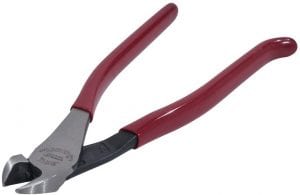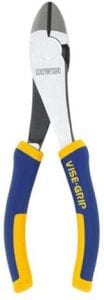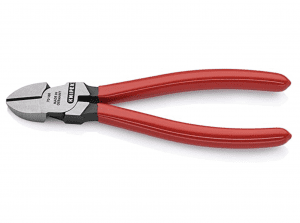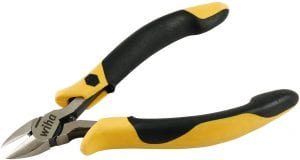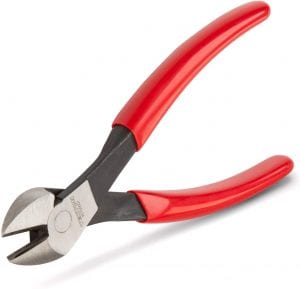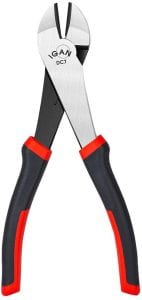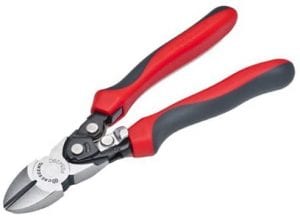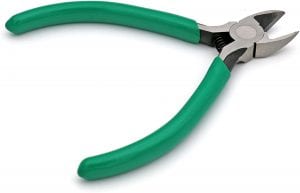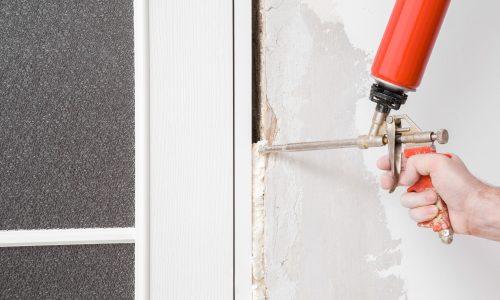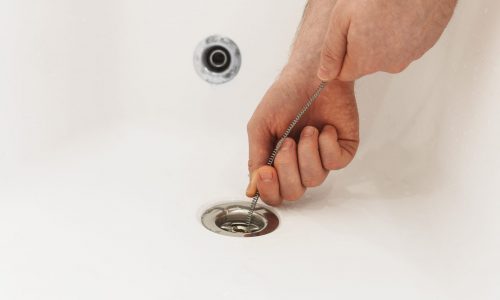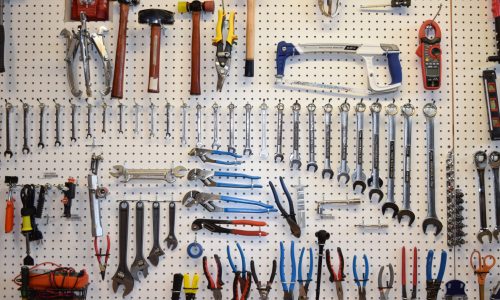The Best Diagonal Cutters
We looked at the top 11 Diagonal Cutters and dug through the reviews from 3 of the most popular review sites including and more. The result is a ranking of the best Diagonal Cutters .
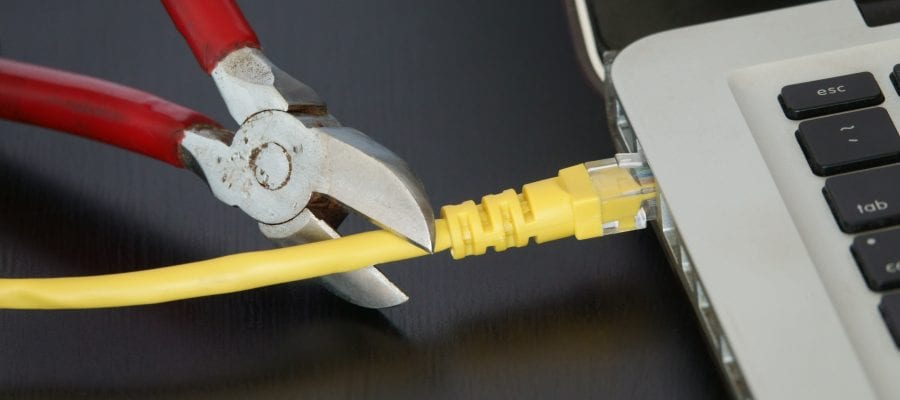
Our Review Process
Don't Waste Your Money is focused on helping you make the best purchasing decision. Our team of experts spends hundreds of hours analyzing, testing, and researching products so you don't have to. Learn more.
Our Picks For The Top Diagonal Cutters
- 1. Klein Tools D248-9ST High Leverage Rebar Bender Diagonal Cutters, 9-Inch
- 2. IRWIN VISE-GRIP 2078306 Diagonal Cutters, 6-Inch
- 3. Knipex Tools 7001160 70 Series Diagonal Cutters, 6-Inch
- 4. Wiha 32760 ESD Safe Flush Diagonal Cutters
- 5. IRWIN 2078308 VISE-GRIP Diagonal Cutters, 8-Inch
- 6. TEKTON PCT00007 Diagonal Cutters, 7-Inch
- 7. Channellock 338 High Leverage High Leverage Diagonal Cutters, 8-Inch
- 8. KNIPEX Tools 7401200SBA High Leverage Diagonal Cutters
- 9. IGAN Ultra Tough & Durable Spring-Loaded Mechanism Diagonal Cutters, 7-Inch
- 10. Crescent Pro Series PS5429C Compound Action Diagonal Cutters, 8-Inch
- 11. iExcell Side CutterChrome Diagonal Cutters, 4.5-Inch
These cutters are hot-riveted to keep operation smooth and steady. Their design, with short jaws and beveled cutting edges, makes it easy to render precise cuts. The handles are dipped in plastic, providing them with a comfortable gripping surface and a bright color that'll make it easy to find them in your toolbox.
Built for Precise CutsGet up close and personal with your wiring using these cutters, which are designed with short jaws for working in close quarters.
This pair of cutters features ProTouch grips to keep your hands comfortable while offering steady control. The cutters are made from nickel-chromium steel for years of reliable use. They also feature an induction-hardened cutting edge to ensure they'll stay sharp through many cuts.
Induction-Hardened Cutting EdgeThe induction-hardened cutting edge on these cutters provides reliable cuts, day after day, without wearing out.
The angled design of these diagonal cutters makes them a great option if you're looking for an all-purpose tool with a variety of uses. The head can squeeze into narrow spaces and the cutting edges are sharpened to about 62 HRC to give you long-lasting cutting power.
Versatile DesignThese 6 1/4-Inch Diagonal Cutters are great for a wide range of cutting needs.
Tackle even thick wire with these cutters, which include a low-wear lap joint and a rivet that can handle extreme pressure. Despite a sturdy build, though, these cutters feature a lightweight construction and comfortable handle. An additional layer of induction hardening gives the cutting edge a solidness of 64 HRC.
Designed for SafetyThese cutters are built with safety in mind, featuring a two-component non-slip soft grip handle.
Buying Guide
If you ever do work around the house, you’ll eventually find yourself needing a pair of diagonal cutters. Used for cutting copper, brass, aluminum and steel wire, these cutters go where other cutters can’t. They feature a pair of handles, similar to what you’d see in a pair of pliers, along with a head that has a sharp cutting blade.
There are nine major types of pliers:
- Slip joint pliers: A wider range gives these pliers greater versatility than diagonal cutters.
- Tongue-and-groove pliers: These are often used in plumbing applications.
- Locking pliers: Locking pliers are used with pipe wrenches, adjustable wrenches and clamps.
- Linesman’s pliers: Also known as electrician’s pliers, these tools are built for smaller wires.
- Diagonal pliers: Also known as cutting pliers, these have a diagonal design that lets them get into confined spaces.
- Wire strippers: A favorite tool of electricians, wire strippers have a variety of uses, but are often used to take the insulated plastic coating off wires.
- Needle-nose pliers: These pliers are ideal for bending wires and holding fittings, among other uses.
- Fencing pliers: Designed for hammering staples into wooden fencing, these oddly-shaped tools are popular in fencing jobs.
Also known as diagonal cutting pliers, diagonal cutters can cut through wire and remove pins, nails and other fasteners. The design of diagonal cutters gives you a different angle than you get with other types of cutters, making it easier to get into those hard-to-reach areas.
It’s also important that the nose of the cutters be narrow enough to squeeze into those spaces. You’ll find as you start shopping around for diagonal cutters that this can vary from one pair to another, making it easier to narrow them down to the one that best fits your needs. There are also end-cutting pliers, which are made to cut wires, nails and rivets.
In addition to snipping wires, diagonal cutters have a variety of other household uses. You may find you’re pulling them out of the toolbox far more often than you expect. They can be great for shearing through those tough-to-cut artificial flower stems, for instance — a task that scissors can’t easily handle.
There are harder wires that won’t be suited for diagonal cutters. Piano wire, for instance, is made from tempered steel and will cause your cutters to struggle. For those tasks, you’ll need a side cutter of higher quality.
Why we recommend these diagonal cutters ?
Products Considered
Products Analyzed
Expert Reviews Included
User Opinions Analyzed
Our experts reviewed the top 11 Diagonal Cutters and also dug through the reviews from 3 of the most popular review sites including and more. The result is a ranking of the best of the best Diagonal Cutters .
DWYM is your trusted roduct review source. Our team reviews thousands of product reviews from the trusted top experts and combines them into one easy-to-understand score. Learn more.
The Best Bang For Your Buck
IRWIN VISE-GRIP 2078306 Diagonal Cutters, 6-Inch
Key Takeawy
This pair of cutters features ProTouch grips to keep your hands comfortable while offering steady control. The cutters are made from nickel-chromium steel for years of reliable use. They also feature an induction-hardened cutting edge to ensure they'll stay sharp through many cuts.
What to Look For
If you’re using your diagonal cutters to cut through wire, you need to follow some safety precautions.
- Ideally, wear a face shield while you’re working in case pieces of wire become dislodged and fly through the air.
- Avoid rocking the tool from side to side while you’re cutting wire. Instead, cut at right angles.
- Never cut through a hot wire.
- Don’t underestimate the importance of a comfortable, non-slip, easy-to-grip handle. The easier it is to hold the cutters, the less likely they’ll be to become a liability.
- It’s easy to get a finger pinched between cutting pliers. For best results, choose a cutter with a grip span of 2.5 to 3.5 inches.
- Keeping your pliers sharp is more than a convenience. Dull pliers can cause you to apply more force, thus becoming more prone to injury.
For best results while cutting, and to make sure you’re taking good care of your cutters, follow these tips:
- Place the object you’re slicing as far into the jaws as possible. This gives you the most control over the tool. However, with some tools, you’ll need to place softer materials like copper or plastic closer to the very tip.
- Often, you’ll be able to operate your diagonal cutters using just one hand. Look for that feature while you’re researching pliers.
- Many pairs of cutting pliers open manually. If you’ll be using this tool often, though, it might be worth finding a spring-loaded pair to reduce your own manual labor.
- If your first cut is unsuccessful, try moving the item to a different part of the cutting surface. If you continue to have difficulty, you may need a different type of cutter for the material you’re working with. Trying too hard to force your cutter to tackle a job that’s too big for it could damage the blade.
- Many cutters have a cutting edge that’s been induction-hardened, which gives it a sharpness that remains even after many cuts.
- Maintenance is an important part of extending your diagonal cutters’ lifespan. Occasionally clean your cutters using soap and water, then dry them thoroughly before storing them. For more stubborn stains, a little oil can help prime the blade so that the stain comes up easily with a rag.
- Durability relies on the material of the cutters themselves, as well as that of the bolts and hinge. Steel is a reliable material that will hold up through many uses.
- If you’ll be mixing your cutters in with other tools, look for one with a bright-colored handle that will stand out. That will make it easier to find the tool you need quickly.
More to Explore
A career as an electrician can be fairly well-paying, but it’s dangerous. So it’s probably no surprise that electricians train for years to become skilled in their field. To become a Master Electrician, a professional must not only go through classroom training and get hands-on experience, but they have to work in the field for at least three years before they can even apply.
In addition to fully understanding how to test and repair various electrical issues, electricians also must become experts on safety. One of the most interesting tasks electricians must master, though, is color perception. Electricians have to be able to pass a color test before starting work, since detecting one wire color from others is an essential part of almost every assignment.

